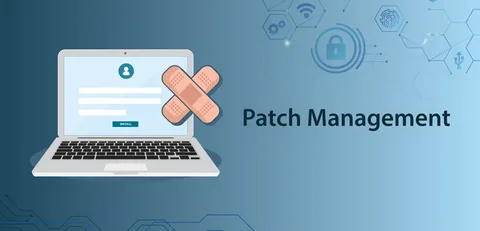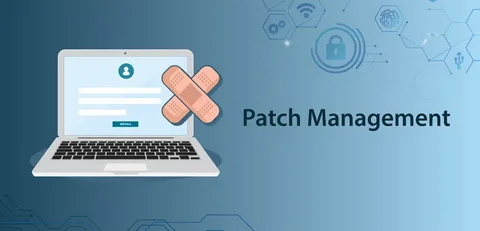Patch Management: Ensuring Security, Stability, and Compliance in Software Systems
In the fast-evolving world of technology, maintaining the integrity and security of software applications and systems is crucial. One of the most critical components of this process is patch management, the practice of managing and applying software updates, patches, or fixes to address security vulnerabilities, improve performance, and ensure compliance.
Failure to implement a solid patch management strategy can leave systems exposed to cyberattacks, performance issues, and legal or regulatory compliance violations. With the increasing number of software vulnerabilities and the rapid pace at which new patches are released, an efficient patch management process is essential for any organization that wants to maintain secure and stable systems.
In this article, we will explore the concept of patch management, its importance, best practices, tools, and common challenges faced by organizations in implementing a robust patch management strategy.
What is Patch Management?
Patch management refers to the process of identifying, acquiring, testing, and applying patches (updates or fixes) to software systems, applications, and operating systems. Patches are typically released by software vendors to fix known vulnerabilities, enhance functionality, or improve performance. These patches can address a range of issues, from minor bugs to critical security vulnerabilities that could be exploited by malicious actors.
Patch management ensures that all software across an organization is up-to-date, secure, and compliant with industry standards and regulations. It helps to safeguard IT infrastructure against known threats and reduces the likelihood of system failures or disruptions.
Types of Patches
There are different types of patches, and understanding each one can help organizations prioritize their patch management efforts:
- Security Patches: These patches address vulnerabilities in the software that could be exploited by hackers. Security patches are often released in response to newly discovered vulnerabilities and are the most critical to apply promptly.
- Bug Fixes: These patches resolve issues or bugs in the software that can affect its functionality or performance. While not always as urgent as security patches, bug fixes improve the user experience and stability of the software.
- Feature Updates: Some patches add new features or improve existing ones. Feature updates are typically scheduled as part of regular software updates, but they may also introduce compatibility issues with existing systems.
- Performance Patches: These patches are designed to optimize the performance of the software or operating system. They might address issues such as memory consumption, processing speed, or network utilization.
- Compliance Updates: These patches are often required to ensure that software remains compliant with industry regulations and standards (e.g., GDPR, HIPAA). They may be necessary to address changes in regulatory requirements.

Importance of Patch Management
Patch management is a critical aspect of IT security, operational efficiency, and regulatory compliance. Here are several reasons why it’s vital for organizations to prioritize patch management:
1. Enhancing Security
Patches, especially security patches, address vulnerabilities in software that cybercriminals can exploit. When patches are not applied promptly, systems remain open to known exploits, which can lead to data breaches, malware infections, and other security incidents. According to numerous cybersecurity reports, the majority of successful attacks leverage unpatched vulnerabilities.
2. Improving System Performance
Regularly applying patches not only fixes bugs but also improves the overall performance of the software. Performance patches may enhance speed, memory usage, and resource allocation, ensuring that systems operate smoothly and efficiently.
3. Ensuring Compliance
Many industries are governed by strict regulatory requirements that mandate timely updates and patching of software systems. For example, healthcare organizations must comply with HIPAA (Health Insurance Portability and Accountability Act), while financial institutions must follow PCI DSS (Payment Card Industry Data Security Standard). Failure to apply patches and maintain up-to-date systems can result in non-compliance and hefty fines.
4. Reducing Downtime and System Failures
Outdated software can lead to system crashes, errors, and other operational issues that can disrupt business activities. Timely patching helps minimize the risk of software-related downtime and ensures that systems are stable and reliable.
5. Cost Efficiency
By addressing vulnerabilities early through patch management, organizations can reduce the costs associated with data breaches, downtime, and system repairs. Patch management can also help avoid the need for more expensive emergency patches or security measures.
Key Challenges in Patch Management
While patch management is essential, it can be a complex and challenging process. Some of the common challenges organizations face include:
1. Volume of Patches
The sheer number of patches released by software vendors—especially for large organizations with many systems—can be overwhelming. Managing patches for multiple operating systems, applications, and hardware devices can lead to inefficiencies and mistakes if not handled systematically.
2. Patch Testing
Before applying patches in a live environment, it’s essential to test them in a controlled setting to ensure they don’t cause compatibility issues or other disruptions. This testing process can be time-consuming and requires careful planning to avoid negative consequences.
3. Business Continuity Concerns
In some cases, applying patches may cause system downtime or disrupt business operations. For example, some patches may require systems to be rebooted or software to be temporarily unavailable. Organizations need to carefully schedule patching processes to avoid affecting business-critical operations.
4. Compatibility Issues
Patches may not always be compatible with other software or hardware in the system. This can lead to unforeseen issues like application crashes or reduced system performance. Ensuring compatibility requires careful planning and, in some cases, coordination with third-party vendors.
5. Lack of Resources
Many organizations lack dedicated resources or personnel for patch management. Without adequate staffing or expertise, it can be difficult to keep up with the constant flow of patches, especially for large enterprises with diverse IT environments.
Best Practices for Effective Patch Management
To overcome these challenges and implement a successful patch management strategy, organizations should follow these best practices:
1. Establish a Patch Management Policy
A clear and comprehensive patch management policy is essential for defining patching priorities, timelines, and responsibilities. The policy should cover how patches are evaluated, tested, deployed, and monitored across all systems, ensuring consistency and accountability.
2. Automate Patch Deployment
Automation tools can streamline the patch management process by automatically downloading, testing, and applying patches. Automation reduces human error, speeds up deployment, and ensures that patches are applied consistently across all systems. Popular automation tools include Windows Server Update Services (WSUS), SCCM (System Center Configuration Manager), and third-party patch management solutions.
3. Prioritize Critical Patches
Security patches should always be prioritized, especially those addressing known vulnerabilities. Organizations should maintain an up-to-date inventory of all software and systems to quickly assess which patches are critical and need immediate deployment.
4. Test Patches Before Deployment
Before applying patches to production systems, it is important to test them in a staging environment to ensure they do not introduce new bugs or compatibility issues. This helps prevent disruptions and ensures that systems remain stable after patch deployment.
5. Monitor and Audit Patch Compliance
Ongoing monitoring and auditing are necessary to track the status of patch deployments and verify that all systems are up to date. Regular audits can help identify any unpatched systems and ensure compliance with internal and external regulations.
6. Create a Patch Rollback Plan
In the event that a patch causes issues, organizations should have a rollback plan in place to quickly undo the patch and restore systems to their previous state. This plan should be tested regularly to ensure it works effectively when needed.
7. Stay Informed
IT teams should stay up-to-date with the latest security vulnerabilities and patches by subscribing to vendor update notifications, security bulletins, and patch management forums. Staying informed ensures that critical patches are applied in a timely manner.
Patch Management Tools
Several tools can help organizations streamline and automate patch management. These tools provide centralized dashboards, automated patch deployment, and reporting capabilities, which make patch management more efficient.
1. Microsoft Windows Server Update Services (WSUS)
- Best For: Windows environments.
- WSUS allows IT administrators to manage the distribution of updates released through Microsoft Update to computers in a corporate environment. It provides a centralized server for managing updates across multiple systems.
2. SolarWinds Patch Manager
- Best For: Small and medium-sized enterprises.
- SolarWinds Patch Manager automates the patching process for Microsoft and third-party applications, ensuring that systems are always up to date with the latest patches.
3. Ivanti Patch Management
- Best For: Large enterprises with diverse systems.
- Ivanti provides a comprehensive patch management solution that automates patch deployment for Windows, Linux, macOS, and third-party applications, while also offering real-time compliance monitoring.
4. GFI LanGuard
- Best For: Small to medium-sized businesses.
- GFI LanGuard is a network security scanner and patch management tool that automatically scans and patches vulnerabilities across the network. It helps ensure compliance with internal and regulatory standards.
5. ManageEngine Patch Manager Plus
- Best For: Enterprises with mixed environments.
- ManageEngine Patch Manager Plus is a patch management solution that automates patching for Windows, macOS, Linux, and third-party applications, offering centralized patch management and detailed reporting.
Conclusion
Patch management is a critical aspect of maintaining the security, stability, and compliance of IT systems. By applying patches promptly and effectively, organizations can protect themselves from cyberattacks, minimize system downtime, and ensure the smooth operation of software applications.
With the right tools, processes, and best practices in place, businesses can stay ahead of potential security risks, reduce the cost of managing IT infrastructure, and ensure that their systems remain up to date and compliant with industry regulations.

